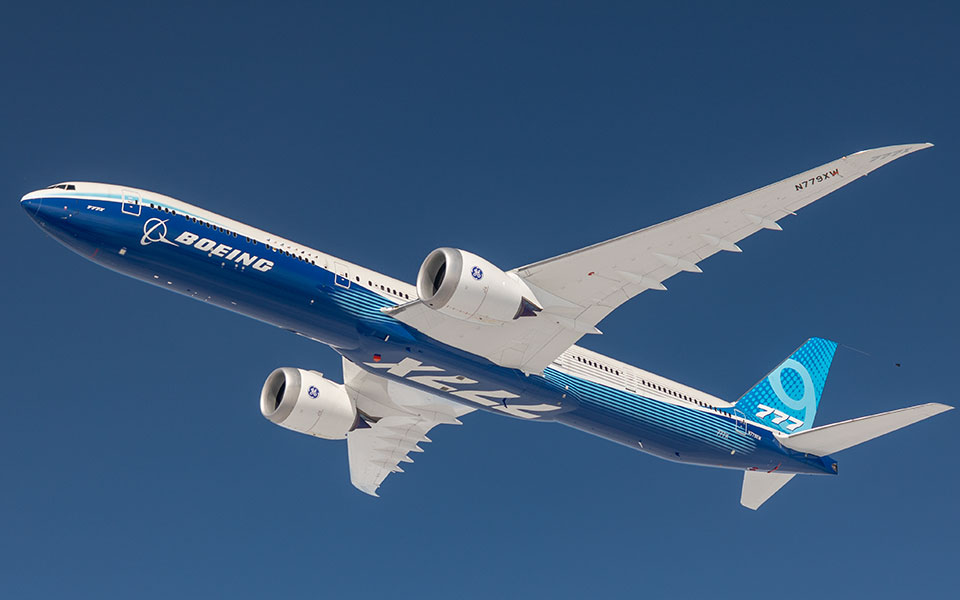Boeing shares climbed after the company’s chief financial officer Brian West said the company was approved for the second flight testing phase of the 777X on March 19, 2025.
“We feel pretty good about the 777X… and in the last two weeks, we got approval for the second phase of the flight testing,” West told Bank of America Global Industrials Conference on March 19, 2025. The company had resumed flight testing for the 777X in January this year after a five month delay after issues with the thrust link followed by strike action in September.
Shares went up over 6% after the call before normalising to above 5% at around 2:10pm GMT.
West continued: “[The second phase] is when you start to get into areas like aerodynamics, the brakes, the engine. So, we’re in that next milestone… we’re on our way now to that second phase of certification and get ourselves to the point where we could get this in service next year.”
The company is continuing to work with the Federal Aviation Administration (FAA) to get the 737-7 and 737-10 certified, with “no change” to the timeline.
As for a new aircraft programme, West said Boeing’s “first priority” is to complete these certification processes.
“That’s job one and we can’t take our eye off that ball now,” West said. However, he maintained a new aircraft programme is coming.
“In the meantime, we have thousands of engineers who work on innovation and on capabilities that we’re pretty sure are going to be important to whatever that next airplane is,” said West. “Those investments are happening as we speak – we’ve been making them and we’re going to continue to make them. It’s not going to disrupt our financial profile… at the right moment, there will be a day when we will get more specific about what it is, but not right now.
Boeing CEO Kelly Ortberg had said in his message on third quarter results that Boeing is “an airplane company” and that it would “make another airplane”. West maintained this and said to “stay tuned”.
The certification processes were delayed as the company grappled with a turbulent year of strikes and regulatory oversight – the impact of which is still being felt. The company said it is improving the safety and quality of its production. For the first two months of the year, Boeing had outpaced its European rival Airbus in deliveries.
“We continue to see really steady improvement across the supply chain… it’s getting very predictable and getting stronger,” said West.
However, he said tariffs may prove a weakness in the supply chain. “The weakness is going to be this uncertainty around tariffs,” said West. “What’s going to happen and how long for? Getting clarity around tariffs around that is going to be important in terms of the strength of the supply chain.”
West said he did not expect tariffs to be an issue in the short term.
“Nearly all of the aluminium steel we buy is US-sourced,” explained West. “And they account for around 1-2% of the average cost of an airplane” He added that its inventory levels and hedging strategies further shield it from tariff exposure.
Additionally, the fire that burnt down SPS Technologies factory – a key supplier of fasteners to Boeing – last month, may also prove a challenge to the supply chain. “We need answers in terms of what this picture is going to look like medium and longer term,” he said.
The company, West sees a “silver lining” with it having a strong inventory to largely weather the storm in near term “Given our elevated inventory levels, we don’t see neither a near term impact on production, nor do we see an impact on us getting to 38 per month on the 737 and seven per month on the 787,” said West.
The FAA capped Boeing’s production of the 737 MAX to 38 per month after the well-documented Alaska Airlines Flight 1282 incident on a 737 MAX in January last year. The company is aiming for a cap increase to 42 per month towards the end of this year.
“Near term, we’re fine – we have lots of inventory,” added West.
The company expects cash burn to improve in the first quarter by around “hundreds of millions” of dollars, said West, adding the company is “off to a good start” for 2025.

